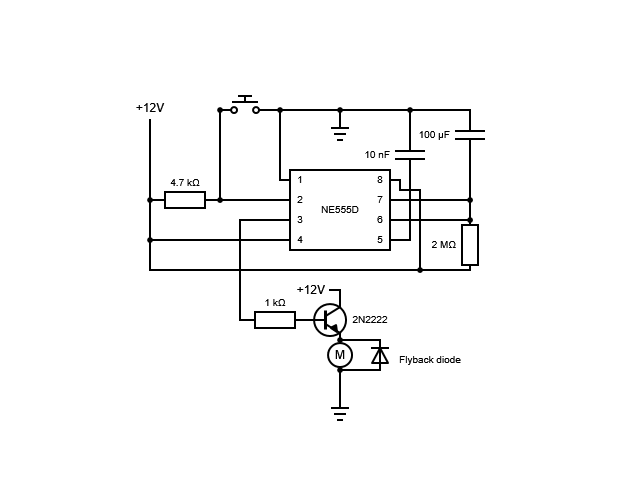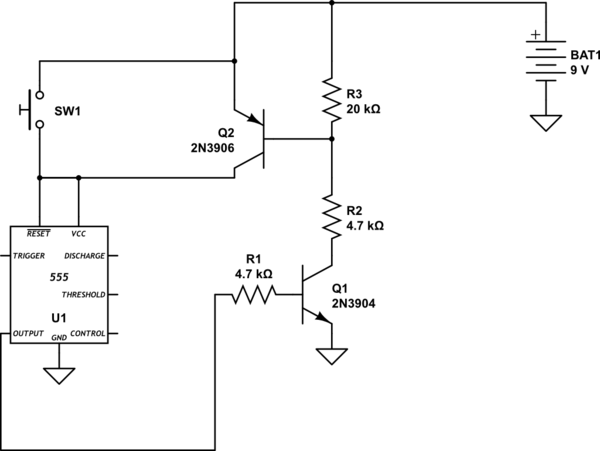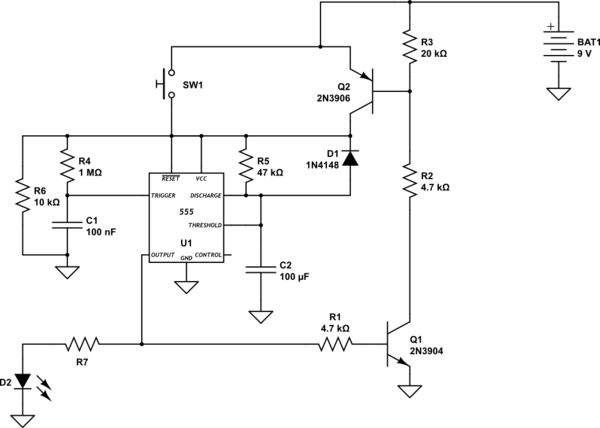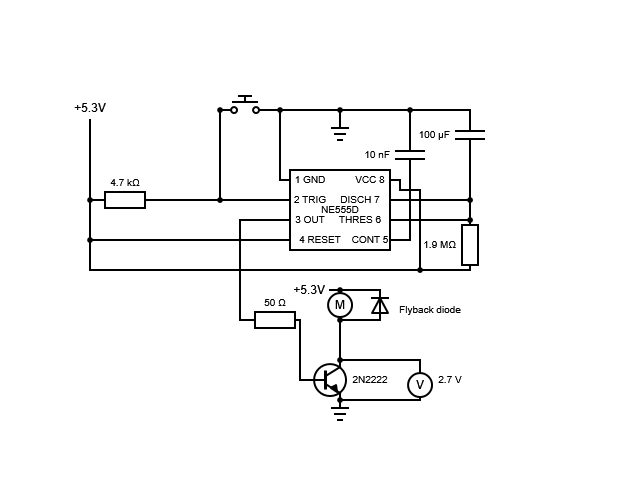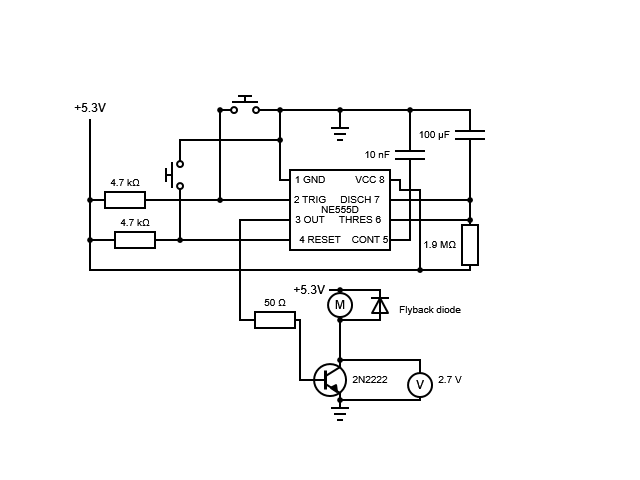I also have another problem in that the talkingelectronics website says the 555 timer chip uses 10 mA while running which means it will be draining the battery during the periods where the fan is off.
Change to a CMOS 555 - LMC555. 98% less idle current.
The circuit in post #8 seems overly complex. I suggest going back to post #3, configure the output transistor as a saturated switch as in Q1 in post #6, with the fan in the collector to Vcc. With the CMOS 555, off-state energy is about 0.1 A-h per month at 12 V, less at 9 V.
For extra low idle current, drop the 555 and change to a CMOS CD4093 quad NAND gate. Normally this would be a bit less accurate and repeatable timing period, but your charging current is so low that the timing capacitor's leakage current becomes a measurable error. This is a common problem for any multi-minute R-C timer circuit. Of the 4 gates in one 4093 package, two form the monostable and one inverts the output to drive the external fan driver transistor. Change that to a small power MOSFET to eliminate the base resistor and base current for even better battery life (every little bit ...).
What is the operating current rating of your fan at 9 V?
ak


